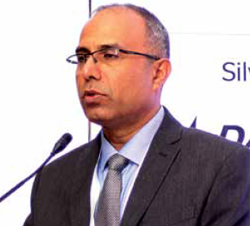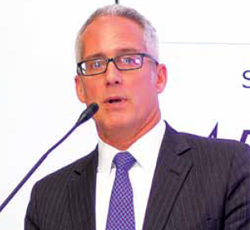- Prime Minister Narendra Modi inaugurates Aero India 2023 in Bengaluru; Releases Commemorative Stamp
- Defence Secretary meets delegations from Saudi Arabia, USA and Oman on the sidelines of Aero India 2023
- Foreign Ministers of 32 countries to attend Aero India 2023
- Embraer showcases the C-390 Millennium at Aero India 2023
BAOA to fight ‘Battle of Perception’
Business Aircraft Operators Association (BAOA) determined to engage, engage and engage with government to propel aviation growth


The refrain at the second edition of the BizAvIndia conference of the Business Aircraft Operators Association in Hyderabad has been to fight the biggest battle, the battle of perception that business aviation is a rich man’s tool. The association has vowed itself to come together on a stronger note and engage the government at different levels, not just the Ministry of Civil Aviation (MoCA).
Though no representative of the Ministry or government was present at the BAOA conference (Anil Srivastava, Joint Secretary of MoCA did not turn up), industry leaders and experts said it was imperative for all to keep going after the ‘big optics’ of aviation (5/20 rule and other issues) got sorted out.
In his welcome address, the BAOA President, Jayant Nadkarni reiterated that the Association which is celebrating its fifth birthday, has been continuously working on fighting the biggest battle, the battle of perception. The association is approaching the issue on different levels, through seminars, through video presentation (the first of the videos was presented at the conference), reports, connecting with different ministries (such as Ministry of Finance) etc. The BAOA president said that business aviation which had enormous potential was presently stagnating due to various issues. The projection that it would contribute 3,400 crore to the GDP between 2016-20 had been downsized to 2,300 crore due to growth stagnating. High input duties was one of the dampeners. “If the duty differential regime is removed, the business aviation fleet will grow.”
Jayant Nadkarni said after the big optics of ‘5/20 rule, 160 airports development, etc’ which the government was now seized of, it would be the turn of the general aviation/business aviation sector.
The Director General of the International Business Aviation Council (IBAC), Kurt Edwards said IBAC is to business aviation like what IATA (International Airport Transport Association) is to airlines. IBAC is working with the International Civil Aviation Organisation (ICAO) in taking up several issues affecting the community and one of the priorities is aviation safety. International standards in safety, environment, etc were being established and member organisations were working together to have them implemented.
Panellists rally on points to get attention
Rohit Kapur, former President of BAOA and Managing Director of Arrow Aviation, who moderated the first session quizzed the panellists on whether the NCAP was a big departure from earlier instances; whether regional connectivity which was the buzz word good enough to kick-start the sector; infrastructure issues etc.
Amber Dubey, Head Aerospace & Defence, KPMG, complimented the government for the ‘big departure’ from the four page policy to a comprehensive once. Regional connectivity and MRO reforms were captured majorly in the NCAP.
Dhiraj Mathur, Executive Director, PWC, said it is the beginning and there is need to leverage capacity as per the regional connectivity scheme. Though the budget does not have provisions for the sector, it was essential for the industry to interact with different ministries well in advance.
Captain M.K. Valsaraj, President & Chief Pilot, Deccan Charters and Colonel Sanjay Julka, Vice President, BAOA & CEO, IndiaFlySafe, were of the view that categorisation such as general aviation, business aviation, private operators, non-scheduled operators etc were terminologies which were confusing the authorities. There was need to simplify the categories. Captain Valsaraj was critical of the draft on helicopters stating that it was completely wide off the mark on several points. Group Captain R.K. Bali (Retd), Secretary of BAOA, talked about viability gap funding (VGF).
Arun Sharma, Managing Director, Aviators India, spoke about helicopter emergency medical services (HEMS) and asked whether it was possible to grow this business with costing of 1,50,000 per hour. There was need for landing of helicopters on site for HEMS to take-off and hoped it would happen soon. Vinit Phatak, Managing Director, Invision Air asked ‘when are you happy in business aviation?’ and answered by saying “first when you buy the plane, and then when you sell.” The charter aircraft business is not making money. Rajeev Wadhwa, CEO, Baron Aviation, said charters are primarily driven by metros and we are not reaching out to markets outside metro. Now thanks to app driven portals such as bookmycharters and JetSetGo, it was possible for anyone to get a charter from any part of the world. Nevertheless, he said it was imperative for operators to comply with the bookings. Kanika Tekriwal, CEO, JetSetGo, talked about how her company was making profits and that the industry should not get despondent.
Kapil Kaul of CAPA talked about developing institutional infrastructure which needed to be aligned to industry needs. Prashant Bhushan, CEO, Taj Air Metrojet Aviation, said the country was faced with inadequate manpower. Group Captain Pankaj Chopra, said there were 360 unused airports in the country and it was totally skewed towards five-six cities.





